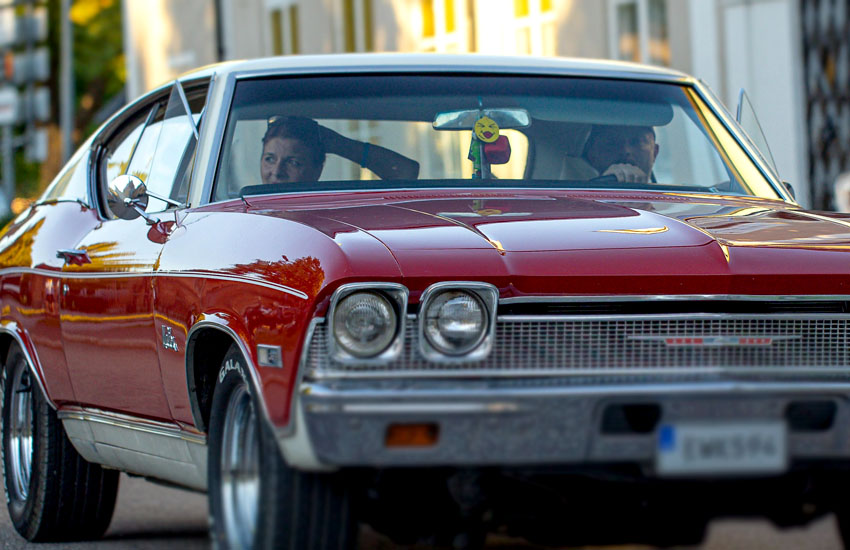When you think of powerful, fast cars, one of the first names that come to mind is likely the Corvette. This iconic American car has been around for decades, impressing drivers with its sleek design and unbeatable performance. But there’s one question that keeps popping up—Is a Corvette a muscle car or a sports car? If you’ve ever wondered about this, you’re not alone. It’s a question that sparks debate among car enthusiasts, and today we’re going to dive into it!
In this article, we’ll explore the world of muscle cars and sports cars, looking at what defines each category. We’ll take a close look at the Corvette’s history, its performance, and how it compares to both types of cars. By the end of this article, you’ll have a clear answer to the question and a deeper understanding of what makes the Corvette such an amazing machine.
What is a Muscle Car?
To really understand if the Corvette is a muscle car, let’s first take a look at what defines a muscle car. Muscle cars became famous in the 1960s and 1970s, and they’re often recognized for their bold and aggressive design, as well as their massive engines. These cars are built for power and straight-line speed, giving them the muscle they’re known for.

One of the key features of a muscle car is its engine. Most muscle cars come with large V8 engines, which are capable of producing a lot of horsepower and torque. This gives them a significant amount of speed and power, especially in straight-line races. Muscle cars are designed to go fast on a straight road, and that’s what made them so exciting to drive.
Besides their powerful engines, muscle cars also have a specific look. They tend to be big, wide cars with bold styling, often featuring sharp angles and aggressive lines. Classic examples of muscle cars include the Chevrolet Camaro, Ford Mustang, and Dodge Charger. These cars are built for performance, but they also have an unmistakable presence on the road.
In terms of performance, muscle cars are built to be fast in a straight line. They may not have the same handling or agility as sports cars, but they make up for it with raw power. Many muscle cars also have a growling engine sound that turns heads wherever they go. This combination of power, performance, and style has made muscle cars a symbol of American automotive culture.
What is a Sports Car?
Now that we have a good understanding of muscle cars, it’s time to look at what makes a car a sports car. Unlike muscle cars, sports cars are designed with a focus on handling, agility, and overall driving experience. While muscle cars are about power, sports cars are about precision. They are engineered to give the driver a thrilling ride, especially when taking tight corners and making quick moves on the road.

Sports cars often have smaller, lighter frames than muscle cars. This is because a lighter car is easier to handle, especially when driving through winding roads or taking sharp turns. The suspension system in sports cars is also fine-tuned for better handling and grip on the road, allowing the car to corner with precision. When you drive a sports car, it feels like you’re in complete control of the vehicle, even at high speeds.
Another important aspect of sports cars is their aerodynamics. These cars are designed to reduce drag and improve speed, especially at high velocities. Sports cars often feature sleek, low-to-the-ground designs that make them more stable at high speeds, allowing drivers to push their limits on the track or open road. Many sports cars also use advanced materials, like lightweight aluminum or carbon fiber, to further reduce weight and improve performance.
Some of the most famous sports cars include the Porsche 911, Ferrari 488, and the Jaguar F-Type. These vehicles are known for their agility, handling, and speed. While muscle cars are all about power and straight-line speed, sports cars focus on delivering an experience that combines speed with incredible handling.
The Corvette’s Origins: Muscle Car Roots
The Corvette has been around since 1953, making it one of the longest-standing American cars in history. The first generation of the Corvette, often referred to as the C1, was introduced as a sports car that could compete with European models like the Jaguar XK120. The Corvette was initially designed to be a lightweight, agile sports car, and its early models had a sleek design and a small engine.
However, it wasn’t long before the Corvette began to lean into its muscle car roots. As the C2 Corvette came along in the early 1960s, the car’s design became more aggressive, and its engine options became much more powerful. By this time, the Corvette was equipped with larger V8 engines, which gave it the raw power that muscle cars were known for. The C2 Corvette introduced iconic features like the wide body and big, bold headlights, which made the car look both fast and powerful.
The Corvette continued to evolve over the years, with each new generation offering more power and better performance. During the 1970s, the Corvette solidified its place in American car culture by becoming a symbol of both speed and muscle. It had the power and presence of a muscle car, but it also maintained some of the performance features of a sports car, especially when it came to handling.
Despite its muscle car influences, the Corvette never fully gave up on its roots as a sports car. Over the decades, it continued to focus on creating a thrilling driving experience, combining raw power with a smooth, agile ride. This blend of muscle car power and sports car handling is one of the reasons why the Corvette remains so unique.
Corvette Today: Muscle Car or Sports Car?
Now that we’ve explored the Corvette’s history, let’s look at where it stands today. Modern Corvettes are a mix of both muscle car and sports car qualities. The Corvette is still known for its powerful engines, particularly the V8, which gives it the kind of muscle car performance people love. At the same time, recent Corvette models have focused on improving handling and agility, making them more like sports cars than ever before.
One of the biggest changes to the Corvette in recent years is the shift to a mid-engine design. This shift, which started with the 2020 Corvette C8, brought the engine from the front to the middle of the car. This move improved the car’s handling and made it more balanced, allowing for better cornering and overall performance. With its mid-engine layout, the Corvette now drives more like a European sports car, offering incredible agility and a smooth, responsive ride.
The Corvette’s performance is also top-notch. Whether you’re driving on the track or cruising down the highway, the Corvette delivers an experience that’s both thrilling and controlled. It can go from 0 to 60 miles per hour in just a few seconds, which is the kind of performance you’d expect from a muscle car. However, it also handles tight corners and curves with ease, something that many muscle cars struggle with.
In terms of design, the Corvette has always had a sleek, aerodynamic look. The more recent models continue to push the boundaries of car design, with sharp lines and aggressive styling that scream both power and speed. Despite these changes, the Corvette still has the bold, muscular look that muscle cars are known for.
When it comes down to it, the Corvette is a hybrid of both muscle car and sports car. It’s built for speed, power, and agility, and it delivers an experience that combines the best of both worlds. Whether you’re looking for a car that can blast down a straight road or take tight corners with precision, the Corvette has you covered.
I hope this article helped you understand the Corvette’s unique position between muscle cars and sports cars. Whether you see it as a muscle car, a sports car, or a combination of both, one thing’s for sure: the Corvette is an iconic vehicle with unmatched performance. It continues to evolve, delivering an incredible driving experience that stands the test of time.
Frequently Asked Questions
Is it true that the Corvette is the fastest muscle car?
While the Corvette has muscle car traits, it’s often considered a performance car that blends muscle and sports car elements. It can reach impressive speeds, but it’s not purely a muscle car.
Can the Corvette handle corners as well as a sports car?
Yes, especially with the newer mid-engine models. The Corvette offers impressive handling that competes with many sports cars, making it both fast and agile.
Do I need to choose between a muscle car or a sports car when buying a Corvette?
Not really! The Corvette blends both muscle car power and sports car handling, so you get the best of both worlds.
Is it easy to maintain a Corvette?
While Corvettes are high-performance vehicles that require some maintenance, they are well-engineered and parts are relatively easy to find. Regular care will keep it running smoothly.
Can I use a Corvette as an everyday car?
Yes, many Corvette owners use their cars daily. However, its performance-focused design means it’s best for drivers who enjoy an exciting ride, even in everyday driving.
Do I need special insurance for a Corvette?
Insurance for a Corvette can be higher than for a regular car, especially if you opt for high-performance models. It’s recommended to shop around for the best coverage.
Is it a good investment to buy a Corvette?
Many Corvettes hold their value well over time, especially limited editions or special models. Buying one can be a good investment if you take care of it.
Can I drive a Corvette on the track?
Yes! The Corvette is built for both the road and the track. If you’re into racing or track days, the Corvette is a fantastic choice.


